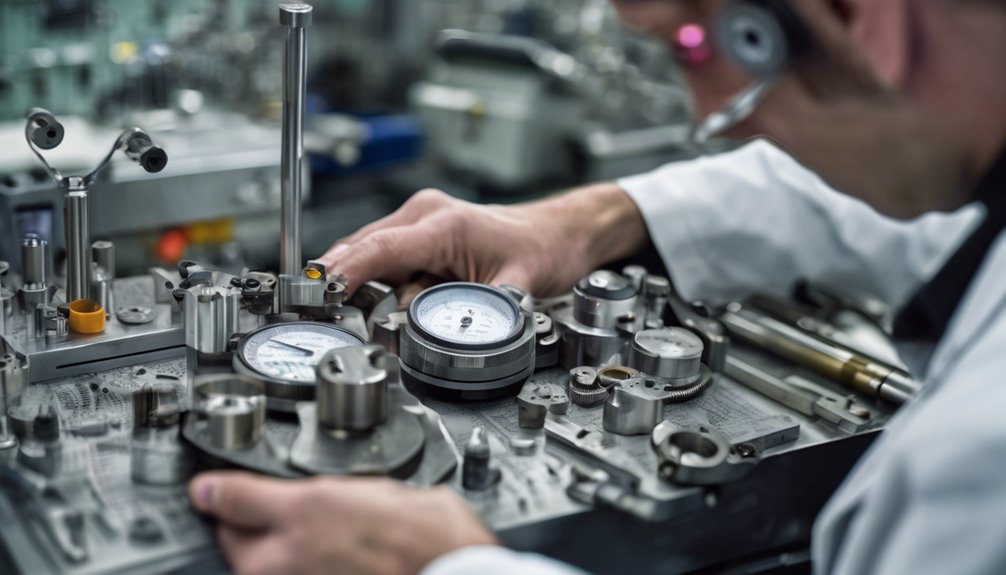When you encounter a Cpk of 1.33, it signals that your process is generally capable but still has room for improvement. This value indicates a stable process that meets customer requirements, yet it also suggests variability that could be minimized. Understanding what this means for your operations is crucial. What steps can you take to enhance your process capability and elevate quality? Let's explore the implications and strategies together.
Understanding Cpk and Its Importance

When you dive into the world of quality control, understanding Cpk (Process Capability Index) becomes crucial for evaluating how well your processes meet specifications.
Cpk helps you gauge the capability of a process in relation to its limits. It essentially tells you whether your process can consistently produce products within the defined specifications. A higher Cpk value indicates a more capable process, while a lower value suggests potential issues that need addressing.
By analyzing Cpk, you can identify areas for improvement, ensuring your processes are efficient and effective. This understanding not only enhances product quality but also boosts customer satisfaction. Additionally, tracking defect rates is essential for pinpointing process shortcomings and driving continuous improvement.
Grasping Cpk's significance empowers you to make informed decisions that lead to overall operational excellence.
What a Cpk of 1.33 Indicates
A Cpk of 1.33 indicates that your process is capable of producing products within specifications, but there's still room for improvement.
This value suggests that the process is somewhat stable and can meet customer requirements. However, you should aim for a higher Cpk to minimize variability and enhance product quality.
A Cpk closer to 2.0 would demonstrate a robust process with tighter control over variation. By focusing on reducing defects and improving consistency, you can increase your Cpk value.
Consider analyzing your process for areas of inefficiency or waste. Engaging in continuous improvement initiatives can help you reach that goal, ultimately leading to higher customer satisfaction and potentially lower costs.
The Significance of Process Capability

Process capability is vital for assessing how well a manufacturing process can produce products that meet specifications.
When you understand your process capability, you can identify areas for improvement, ensuring consistent quality and reducing waste. It helps you gauge how often your products fall within acceptable limits, which directly impacts customer satisfaction.
A higher process capability means fewer defects and lower costs, making your operation more competitive. Additionally, monitoring process capability provides insights into your production efficiency, enabling you to make informed decisions. Understanding the Process Capability Index allows you to measure potential and actual performance effectively.
How to Calculate Cpk
Start by identifying the upper specification limit (USL) and lower specification limit (LSL) for your process.
Then, calculate the mean and standard deviation from your data.
Plug these values into the Cpu and Cpl equations to find their respective values.
Finally, take the minimum of Cpu and Cpl to determine your Cpk value, which indicates your process capability.
Factors Affecting Cpk Values

While several factors can influence Cpk values, one of the most significant is the variability in your process. If your process has high variability, it'll cause your Cpk to drop, indicating that you're producing items outside specification limits.
Additionally, the stability of your process plays a crucial role; an unstable process can lead to inconsistent results, further impacting your Cpk.
Another factor is the capability of your measurement system. If your measurements aren't accurate or precise, they can distort your Cpk calculations.
The specification limits you set also matter; tighter limits can lower Cpk if your process isn't capable.
Lastly, environmental factors, like temperature and humidity, can affect your process consistency, ultimately influencing Cpk values.
Implications of a Cpk Below 1.33
When your Cpk falls below 1.33, it signals potential issues that could affect product quality and customer satisfaction. You might notice increased variations in your processes, leading to defects and inconsistencies.
This can result in higher rejection rates and increased costs, as rework or scrap becomes necessary. Customers may experience dissatisfaction due to unreliable products, which can harm your brand's reputation.
Additionally, low Cpk values can indicate that your processes aren't capable of meeting specifications consistently, risking compliance with industry standards.
It's essential to recognize these implications early to address them. Ignoring a low Cpk can lead to long-term problems, including lost customers and diminished market share.
Being proactive is crucial to maintaining quality and trust.
Strategies for Improving Cpk

Addressing a low Cpk is vital for enhancing product quality and customer satisfaction. Start by analyzing your process data to identify variations and root causes affecting your capability.
Implementing statistical process control (SPC) can help you monitor performance in real-time, allowing you to make immediate adjustments. Training your team on best practices and quality standards ensures everyone is aligned and focused on improvement.
Additionally, consider investing in better equipment or upgrading existing machinery to reduce variability. Regular audits of your processes can also uncover areas needing attention.
Lastly, foster a culture of continuous improvement where employees feel empowered to suggest changes, leading to a more capable and efficient production environment. By applying data-driven decision-making, organizations can systematically tackle challenges and improve overall process performance.
Cpk in Different Industries
Cpk plays a crucial role in various industries, as it helps you measure how well your process is performing relative to specifications.
In manufacturing, Cpk ensures product quality by assessing production variations and aligning them with customer expectations.
In the automotive sector, it helps maintain safety and performance standards by minimizing defects.
In healthcare, Cpk is vital for processes like lab testing, ensuring accurate results and patient safety.
The food industry uses Cpk to maintain quality control, ensuring products meet health regulations.
Even in service industries, Cpk can measure process efficiency and customer satisfaction.
Real-World Examples of Cpk 1.33 in Action

Achieving a Cpk of 1.33 can significantly enhance product quality and process reliability across various sectors. In the automotive industry, manufacturers often strive for this level to ensure that components like brakes and engines meet strict safety standards.
When you apply Cpk analysis, you can identify areas for improvement, leading to fewer defects and higher customer satisfaction.
In electronics, achieving a Cpk of 1.33 helps ensure that circuit boards function correctly, reducing the risk of failures in devices.
Moreover, in pharmaceuticals, maintaining this Cpk level ensures that dosages in medications are accurate, promoting patient safety.
Conclusion
In conclusion, a Cpk of 1.33 shows your process is on the right track but has room for improvement. By focusing on reducing variability and enhancing quality, you can boost customer satisfaction and product reliability. Don't overlook the importance of continuous analysis and proactive strategies to elevate your Cpk. Remember, striving for excellence not only benefits your processes but also strengthens your reputation in the industry. Keep pushing for those improvements, and you'll see the positive impact!

